
There’s only one way to enjoy all the beauty and lore that make your town unique, and that’s by saddling up on your choice of the best bikes for around town.
It’s challenging to find a good value-for-money bike with solid components that are lightweight enough not to be cumbersome while comfortably keeping your heart healthy.
I came down to this combination of road, hybrid, and electric bikes as the best bikes for scooting you around town.
- Co-op Cycles CTY 2.1
- Lekker Amsterdam
- Cannondale Bad Boy 3
- Carrera Subway 2
- Brooklyn Bicycle Co. Franklin 3
- Commuter 7
- Specialized Turbo Vado SL 4.0
- Ultimate T10+ HMB
The cycling world has significantly benefitted from the introduction of electric bikes. Still, with all the confusion around these often chunky pieces of future tech, it's challenging to pick a bike just from its name and looks. Below, I give you some enlightening tea on the electric bikes that I enjoy for riding around town and the traditional padel power machines you should have.
I spent many hours perusing user feedback, professional reviews, and expert recommendations to ensure that I provided one of the most in-depth lists. I not only rely on my own limited, biased opinion and experience, but I also use many reviewers who have first-hand testing impressions, such as Insider, Bikeradar, Cyclingweekly, etc.
8 Best Bikes To Take Around Around
I’ve tried not to limit my search to the usual suspects that you’ll often find in lineups, your Cannondales, Canyons, and maybe Specialized. So honk or hoot if you resonate with some of these other culprits that miss the same level of exposure.
1. Co-op Cycles CTY 2.1
Take on any terrains your city will throw your way and ride with your pockets full on the CTY 2.1. For $799, this hardtail hybrid has a lockable front suspension and some decent Shimano components.
The front suspension has 63 mm of travel, which is enough to dampen the shock of hitting small potholes and going over rocky roads.
You can also lock the SR Suntour Nex DS shocks for static riding, which helps increase comfort on smoother roads. The riser handlebars are more ergonomic for both hands and the rest of the body by encouraging a more upright riding position.
The geometry is also relaxed so that you aren’t hunched over the handlebars while riding around town. I also enjoyed the addition of the reflective sidewall of 700x40 mm wheels. The Kenda Kick-Back tires provide all the traction you’ll need offroad and on the tarmac without sticking.
The aluminum frame is as affordable and dependable as the Shimano M315 hydraulic disc brakes on the bike.
The CTY 2.1’s drivetrain improves from the series-first CTY 1.1’s Shimano Tourney\Acera to the much better Shimano Altus. Although the components are still at the lower end of the spectrum, Shimano’s Altus groupset does offer unmatched reliability and efficiency at a lower price.
This Rei’s in-house hybrid entry has 24 gears to hustle you up hills and keep you stable going down and give you comfort riding flat. Unlike the more expensive CTY 1.3, you have a good ol’ reliable chainset instead of a belt drive.
I can’t lie, I love the convenience of a belt-drive, but it can be unnerving to have it slip out on you if you are inexperienced with the setup. Although chains can be messy, it keeps the already significant 31 pounds of the bike low.
The extra weight is mainly from the front suspension. If Rei also kitted the bike with a belt-drive, it would be even weightier, so this is a fair trade. You can still lift the bike a flight of stairs without too much hassle.
The 3x8 drivetrain is smooth and doesn’t seem to suffer from the follies of wide gear ratios while benefiting from it up demanding hills. Shifting is reliable and accurate for being a bike that’s not much more expensive than its first entry in the CTY series.
2. Lekker Amsterdam 8 Speed
At almost $1,600, the Lekker company’s newer flex is an excellent commuting companion. As the name implies, the bike is an 8-speeder which you might think is too low, but it isn’t too bad for city riding. The 8-Speed also uses a creative support mechanism for changing gears which makes gearing while pedaling as smooth as butter.
Two of the most attractive characteristics of this urban commuter are the carbon Gates CDX 118t Belt Drive System and the stylish design. The belt drive system makes power transfer more efficient and removes the regular need to clean the bike’s chain.
The internally geared Shimano Nexus hub protects your bike from the wear of city weather. Unfortunately, although the bike has some significant clout and rides decent enough, it has considerable drawbacks.
Among these flops is the Shimano Revoshift shifters which are relatively entry-level for being on a bike that has its price toe in the shallow end of premium bike pricing.
Having only to twist the shifter and having a clickbox almost makes us forget the hassle of manually adjusting belt tension when needing to change the rear tire.
Lekker Amsterdam could have also dealt with cabling below the handlebars a little better because right now, they are a nuisance and rub on the headtube.
However, the Velo saddle does fly the excellent engineering of the Velo saddle brand. The saddle still feels amply comfortable while being light and attractive.
Although I loved this bike, it's challenging to overlook that it seems like Lekker splurged on the belt drive and quickly realized that they still need quality components.
The market is waiting for a rendition of this bike with better components, a more relaxed riding geometry, and maybe have the manufacturer put the 28.5 pounds of the bike on a diet.
3. Cannondale Bad Boy 3
The Cannondale Bad Boy 3 is built to dominate the urban scene. Everything from the lefty rigid fork to the glossy color choice stands out from a sea of bikes. Cannondale’s Bad Boy 3 has integrated top tube bumpers that protect your frame from damage by the handlebars.
I've been a fan of Cannondale’s SmartForm C2 alloy frame for a while because of its ability to minimize road vibrations without relying on the bike’s suspension.
The lefty fork situation is something that you don’t see often, and when you do see it, it gets overdone.
However, you get to have positive experiences without compromising the bike’s build integrity. Changing the front tire without removing it from the form is an exceptional bonus.
And unlike some similar token bikes, the Bad Boy 3 doesn’t have a single dropout which could lead to flex when a steep hill is tolling you.
The bike's uniqueness does help reduce the chances of theft for people that strip bikes for parts. It’s just also unfortunate that it’s this uniqueness that causes the bike to weigh over 27 pounds.
I found the bike an exceptional do-it-all ride, from shredding the city streets with the noteworthy 650b x 40c WTB Byway tires to turning heads on mountain trails. Some terrible squeaking comes from the lefty 50 front hubs, but carefully applying a lubricant drop fixes things up.
Besides the minor squeaking and the slightly heavier build, the microShift shifters and derailleurs are only equivalent to Shimano Tourney components at best, and you’ll most probably outgrow them quickly. The sealed cartridge bottom bracket also helps remove the constant need to consider service if you ride in wily weather conditions.
The Bad Boy 3 is a no-brainer for me at under a thousand dollars. Even if I was still envious of the Gates belt drive system on the Bad Boy 1, the 16-speed drivetrain, clandestine welds, and internally routed cables had my ticket from the get-go.
I’m not a conservative when it comes to parts; I just like convenience. And the tip-top Shimano hydraulic disc brakes are another convenience at a steal.
4. Carrera Subway 2
Like the Subway 1, no other bike says affordability and comfort quite like the Carrera Subway 2. At a mere $375, I would have overlooked the bike as another mass-produced heap, but fortunately, I was familiar with the Carrera brand.
The 2020 Subway 1 and 2 sit way under the amount I would advise people to spend on a bike meant to take you all over town.
The Subway 2 is priced at the top-end of the Subway line, so knowing that should make you do a double-take. Halfords bikes are more commonly seen on European or British streets than here.
At around 30.2 pounds, the bike isn’t light by any means but being held together by an alloy frame that’s sturdy and pleasing to look at puts the weight into the relatively light category.
The 27.5-inch by 1.95-inch hybrid tires are Kenda puncture-protected to help keep them healthier for longer without compromising too much on other performance factors.
The tires have a decent amount of comfort and don’t stick to the road for sluggish-feeling rides, but for a bike this affordable, you can do with some livelier aftermarket installations for comfort, speed, and traction.
Halfords seems to have created a comfortable bike even at this price point. Not only because of the tires but also because of the Carrera Memory Foam saddle, which is a saddle quality that you don’t see much on cheaper bikes like this one.
The Shimano Altus 2x9 group set isn’t the best, but it provides more than I expected. It shows that even when a bike is built to cut as much cost as possible, you can salvage reliability at the moment to equip even entry-level Shimano parts, you can salvage reliability.
The shifting on the bike is more responsive than I thought it would be, and the helping of 18 gears is lovely for riders still grappling with fitness.
I would have liked the addition of some mudguards and grips that are much more inviting, especially since it wouldn’t have made the final price that much more different.
There are mounts for mudguards and panniers, so that I couldn’t complain that much. The Clark’s Clout hydraulic brakes also shut me up in the best of ways.
5. Brooklyn Bicycle Co. Franklin 3
Like the Carrera Subway 2, the Brooklyn Bicycle Co. Franklin 3 is priced well below its worth. The bike is packed with features that transform a city bike into a utility machine.
The 3-speed Shimano Nexus gearing is adequate for moderate city hills and is made much more special by being super low-maintenance because it’s an internally geared hub.
Brooklyn Bicycle Co. knew that people like myself would complain because of its relatively limited gearing range and went ahead to offer an 8-speed version of this exact bike.
The only catch with the 8-speed is a typical externally geared offering, which has all the baggage requiring more consistent maintenance.
I didn’t find much to complain about when reviewing the 700x35c puncture-resistant tires. The tires do just as well on cobblestone paths as over smooth paved roads.
The almost 34-pound bike is on the heavier side of our list, but it’s relatively light and flexible for being pretty much all-steel. It is flexible because it can absorb vibrations and bumps better than most steel-framed bikes decorating the $449.99 to $599.99 price range.
However, the Tektro dual-pivot caliper front and rear brakes were a glaring reminder of the bike being painfully entry-level.
It’s difficult to depend on V-brakes on a bike that you wish to induct as a daily city commuter, especially with all the motor and foot traffic that you need to respond to in a moment regardless of the weather conditions.
Fortunately, the super-low step-through frame doesn’t discriminate against garb and allows equally convenient riding for a skirt or toga-wearing rider. The upright geometry, fenders, safety light, and mounting points make the Franklin 3 prime for daily commuting.
The giving vegan leather grips and large, vegan leather saddle reminded me of a vintage cruiser bike.
6. Canyon Commuter 7
Canyon is back at it again with the Commuter 7. This line has become another no-brainer for people looking for quality city commuters that aren’t too bad on the eye.
The straightforward frame of the Canyon Commuter 7 flaunts all that makes a hybrid urban bicycle more worthwhile than a road bike. The Shimano Alfine S700 11s internally geared hub gives such smooth shifting that you almost forget that this is the non-motorized version.
The 11 gears are plenty of range for all the hills I’ll encounter around town, and the addition of the Gates belt drive system is my bike heaven. Shifting isn’t only dead-accurate; it is effortless and makes nearly no sound.
Gone are those loud clicks and clunks that make everyone aware that you are struggling right at that moment. It’s no secret that I love belt-driven bikes, and the Commuter 7 reminded me just how much I feel at home with them.
There’s no dirt or murk to contend with, and you’ll hardly ever think of maintenance unless it’s time for your bike’s service.
I could see that everything on the Commuter 7 was made to add value to the $1,889 build. The 205-lumen front Supernova E3 Pure light and E3 Tail Light 2 are pedaled powered, never to fail you when you need them most.
You’ll notice that the bike's aluminum frame is a bit thicker than most (especially the down tube, head tube, and fork), and that’s because it’s keeping all those pesky wires out of sight and safe within the frameset of the bike.
The engineering of the frameset also brings added strength to the build without stealing away from the bike’s nimbleness.
The drivetrain and the Shimano MT200 hydraulic brakes don’t weigh down the bike as you’d expect, and with all the extras, this commuter is a good 28.88 pounds. Not a bad deal for being such a well-equipped ride.
7. Specialized Turbo Vado SL 4.0
The Turbo Vado SL 4.0 is the perfect companion for the lot on the fence about electric bikes. The three performance modes (Eco, Sport, and Turbo) let you tailor the riding experience to your needs.
The Eco mode offers minor assistance (about 30% effort from the motor) when paddling but enough assistance to help you ascend steeler roads without shattering your knees and quads.
For $4,799, the bike has a price tag that starts to dip its toe into the pricier electric bike proverbial pond.
It is a midrange machine even if the self-brand peak 240 W (standard in the UK because of local electric bike laws) motor and expandable 320 Wh battery seem lacking compared with Bosch setups at this price range.
Although the fully integrated battery is probably one of the smallest I've seen for an electric bike that's meant to be midrange, 25 miles is standard, and you can even do upwards of 60 miles plus on the Eco mode.
That’s all from a battery that charges within two hours, even if you can’t remove the battery for more convenient charging. The bike does hold up with Super Light (SL) name by being only about 33 pounds, which is almost half the weight of most electric bikes.
The bike also benefits from the fact that everything is so well integrated into the lightweight aluminum frame. The pairing of the operating motor and the 11-42t Shimano Deore cassette, same line 10-speed rear derailleur, and Praxis chainring create quite the chatter when you shift gears.
The motor hums more than you’d think, and the clunking of shifting gears isn’t obnoxious but is audible enough to remind you that this isn’t a Specialized premier offering.
However, the Tektro HD-R290 hydraulic disc brakes feel at home on the 160 m rotor and will keep you rolling with peace of mind.
The 10-speed RapidFire Plus Deore shift levers are fun to operate and capable of tackling most of the town terrain you’ll be traversing in your jolly meander around town.
8. Gazelle Ultimate T10+ HMB
If you fancy yourself an adventurer in your sagas around town, you’ll probably end up on some rundown track that tempts mystery at the end of a gravel road. The Ultimate T10+ HMB is the only companion you’ll need.
The bike is designed to contend with whatever surfaces you wish to challenge, and with its Suntour Mobie 45 front suspension, you’ll hardly notice that you've switched terrains.
The 80 mm of travel on the fork does a tremendous job of softening bumps, and the addition of the lockout makes sure that you aren't taken on some expensive carousel ride.
For $4,199, you want all the comfort and convenience you can get. Gazelle made sure to fulfill that brief with the suspension and Schwalbe Energizer Plus 28x1.75 inch tires. The tires are versatile enough to make for decently quick road tires and grippy and comfortable to flirt with gravel paths.
The bike's semi-upright riding allows for fast riding when you are in a hurry but is a more in-limbo riding position for when you want to take in the scenery.
The motor has four riding ranges starting with the Eco range, which can do around 55 miles, and draws things back in with the Turbo range, which only manages to get you about 20 miles.
The Bosch Performance Line Speed motor is robust and fast, so you shouldn't have trouble with even Sisyphus-level hills. This motor has more heft than Turbo Vado SL 4.0 motor.
The 500 Wh Bosch PowerTube battery is well integrated into the bike’s down tube, as neat as the internally routed cables. Unlike our previous entry, the battery I removable, so you can charge it next to your desk while working.


























































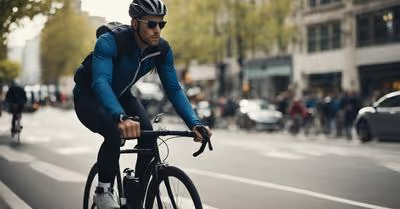












































































































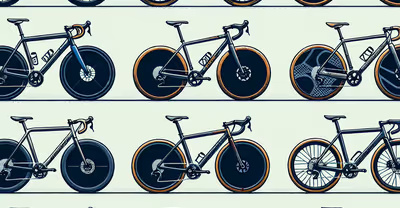

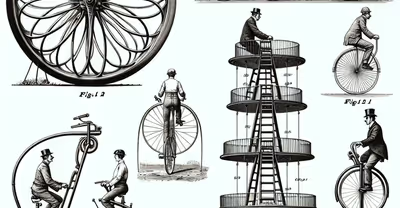
















































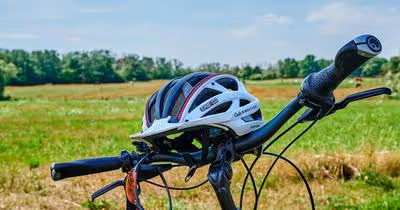



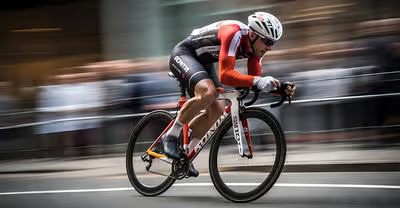





















































































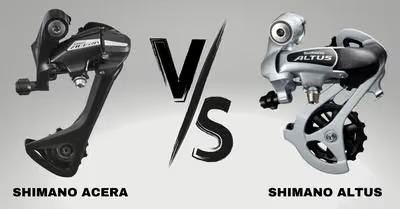






































































































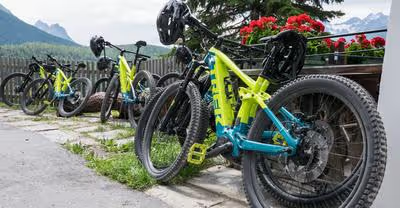













































































































































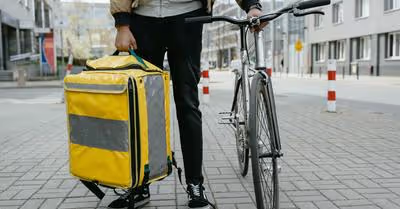
















































































































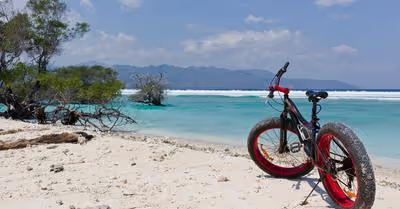


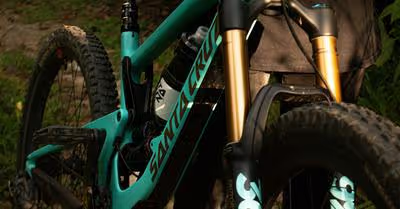
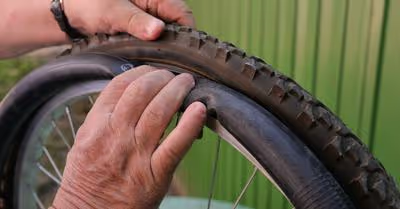

















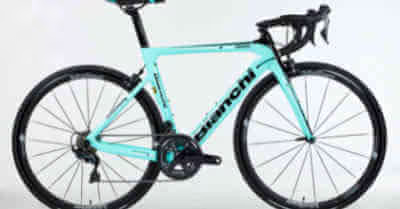



































.avif)
